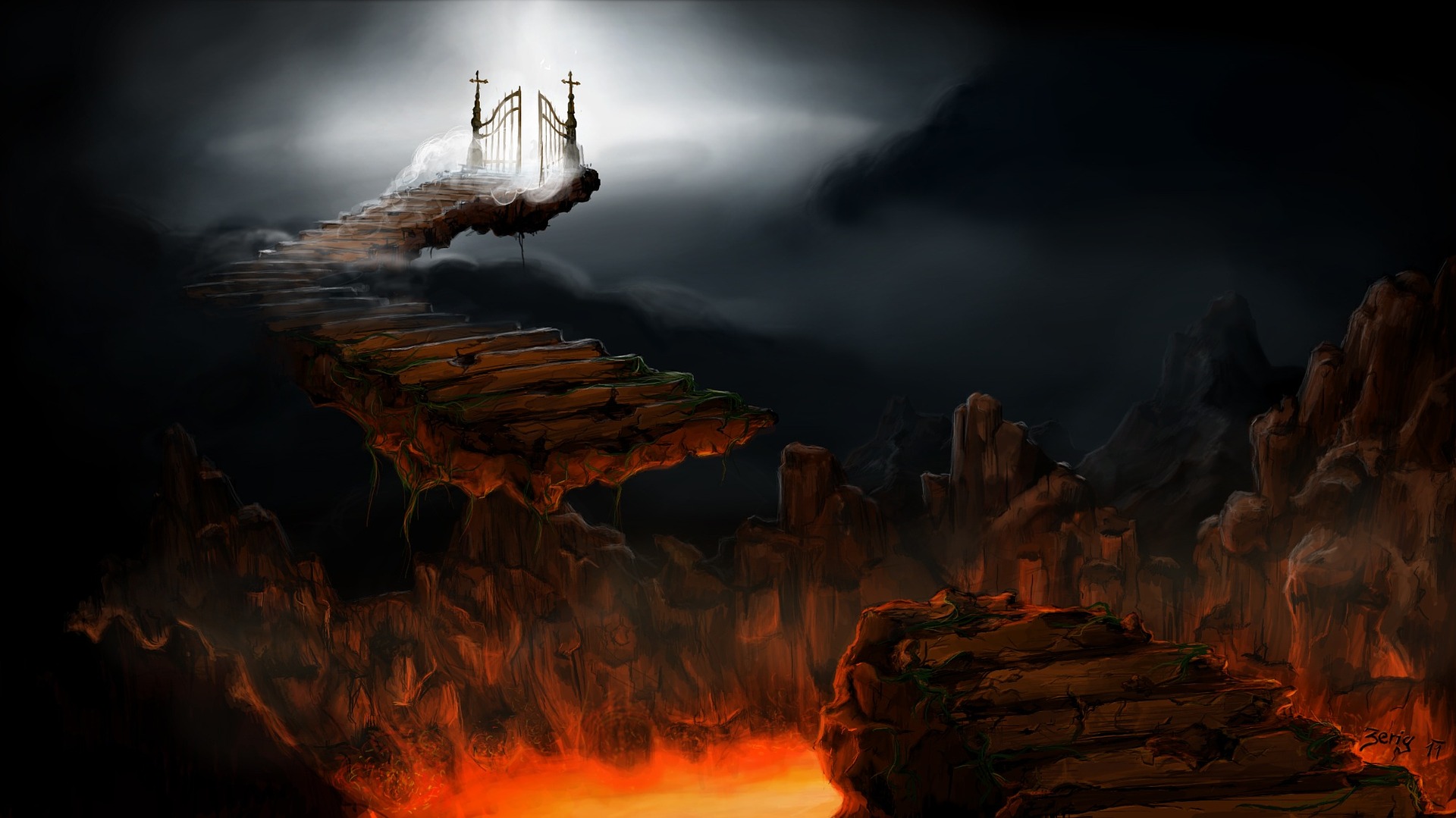How Did The Dials Get Set?: The Fine-Tuning Argument (Part 2)
In the last article, we talked about some of the constants, forces, and laws of the universe that have come together in such an improbable manner in order for the universe to be life-permitting. We compared these constants to dials on the wall of a control room as a way to show how accurate each of the dials has to be set and how narrow the range was for all the dials to be set perfectly.
That the universe is fine-tuned for life is widely agreed upon in the scientific community. The question of why is one left up to much debate. There are three possible alternatives as to why the universe is fine-tuned – physical necessity (the constants and quantities have to have the values they do), chance (the universe we live in was just a big cosmic accident), or design (the universe was designed to be life-permitting).
Let’s keep in mind a few traits that our cause must have. It has to be external to the universe. The universe couldn’t have created itself before it existed. It has to be nonspatial, atemporal, and nonmaterial because we are talking about what caused space, time, and matter to come into existence. It also has to be powerful enough to create everything we see in the universe And, finally, it has to be intentional in its manner to create a universe fine-tuned for life
Physical Necessity
The idea of physical necessity would state that the constants and laws had to have the values that they do. No other universe could possibly exist. But, this seems silly. Of course, the constants could have had other values and the universe still exist. Just not this one. In fact, it’s much more probable that a universe would exist without life than with it. The universe didn’t have to come out the way that it did.
Chance
Chance is probably the most popular conclusion that secular scientists come to. We’re here because of pure, dumb luck. All of this is a big, cosmic accident.
The problem with this option is that the chances of a life-permitting universe even existing are so small, it is almost zero. Astrophysicist Hugh Ross has calculated the chance that all of the constants and forces – around 122 in all – would exist today for any planet in the universe by chance. If we assume there are 1022 planets in the universe, that would make the probability one chance in 10138! That’s a 10 with 138 zeros after it. So, the chance that we would walk into our control room, and all the dials and switches are randomly set correctly to allow for life in the universe is 1 in 10138. By comparison, if I asked my boss if there was a chance I would get a $2,000/hr raise today, and he told me I had a “one in a million” chance – or 105, a 10 with 5 zeros – we know what he means; it ain’t gonna happen! The chances are pretty much zero.
Attempts To Make The Case For Chance
One analogy that often gets used to show that chance is a possible explanation of the universe is that of a lottery. Millions and millions of people play the lottery and yet, someone wins. So, maybe we were the winners of the universal lottery. But, this analogy doesn’t take the probability far enough. The chance of a life-permitting universe to be selected is like a lottery with 10138 white ping-pong balls. One is red and the rest are white. A random ball gets selected from the bin and drops into your hand. Get the red one, you get to live. Get any of the white ones, you die. Or how about a game of Rusian Roulette, where the gun has 10138 chambers where only one of them is empty and the rest are loaded with bullets. You can begin to see just how improbable it is that we would exist at all, and how much more likely we are to have picked a loaded chamber.
The point of the fine-tuning argument isn’t to explain why this particular universe was picked. The point is to show that the odds were far more in favor of a white ball or a bullet coming out. But, we got the red one, or the empty chamber, and got to live.
In that same vein, the chances of a life-prohibiting universe are far more likely. But, we got a universe that is life-promoting, and the odds of that were practically zero.
Another way scientists try to make the case for chance is through the concept of the multiverse. The theory is that a universe generating machine of some sort is popping out an infinite number of universes like bubbles from a pot. The attempt is to show that with an infinite number of universes to pick from one is eventually going to have life on it. We’ve talked about the multiverse before and the problems with this theory. The biggest issue is that we are unable to observe a universe outside of our own, so this theory is just pure speculation. We can’t use science and observation to show that a universe-generating machine – let alone other universes – exists. But, all this argument really does is kick the can down the hall a little bit. A device that is generating universes would have to be designed to do so. Which means a Designer would still be required.
A Designer
We’ve ruled out physical necessity and chance as suspects for fine-tuning. That leaves us with a designer. The amount of precision, the amount of information, and the complexity of all of the moving parts working with one another points to an intelligence behind the design. Things this complex don’t “just happen” – no matter how much time you give them. Sure, given enough time and monkeys and typewriters, we might get one of the works of Shakespeare randomly generated (the chance explanation). But, when you walk into a bookstore, the thought of anything other than a human author never crosses your mind. No matter how bad the book is. You know that something intelligent with purpose put those words on the pages.
In the same way, if someone who had never been to America before drove by Mt. Rushmore, their first thought wouldn’t be “wow. Look at how time and weather has carved 4 accurate human faces into the side of that mountain”. They would instantly realize someone intentionally carved those faces there.
Objections To The Designer
Now, let’s consider a couple common objections to the designer hypothesis. Often times, we might here people say “well, of course we are observing a life-permitting universe. If it wasn’t life permitting, we wouldn’t be here to observe it!”. In other words, if a non-life permitting universe ever existed, no one would know about it because no one would be there to see it, so the only kind of universes we can observe are the ones where we are here to observe them.
There is a problem with this thinking, though. We still need to explain why this universe exists. And, this challenge is an attempt to avoid answering that question.
A second objection that comes up is the question of who designed the Designer? In other words, what is the explanation for the explanation? There are two problems with this challenge. First, requiring an explanation for the explanation before you come to a conclusion would quickly lead you down the rabbit hole of infinite regress. Once you came up with an explanation for the explanation, you would need an explanation for that explanation. And then an explanation for the explanation of the explanation. And so on and so on. You would never come to a final conclusion or be able to make a decision.
For example, imagine you were walking in the woods and you came across a bicycle leaning on a tree. The most reasonable conclusion would be that someone put it there. You could come to this conclusion without having to know exactly who put it there, nor understand the manufacturing process of bicycles nor the molecular structure of the material that made the bike or the physics involved in motion to get it to its current resting position. Sure, knowing all of those things would give you a deeper understanding of the event, but they are not necessary for an explanation of why it is there. Imagine saying “well, I don’t have a degree in physics or mechanical engineering or manufacturing experience, so I can’t tell you why the bike is there”. That would be ridiculous!
The second problem with this challenge is the nature of what we are talking about – the First, Uncaused Cause. The thing that caused everything to come into existence necessarily has to be uncaused and outside of everything else (time, space, matter, etc). If not, we’re back to the infinite regress problem again.
Conclusion
The general consensus among the scientific community is that the universe is fine-tuned for life. Did this universe have to exist based on the constants and values of the laws governing the universe? Clearly not. Was it the luck of the draw? The odds of that are practically zero. That leaves us with a Designer – an intelligent, purposeful agent of immense power that chose to create the universe to allow for life.
The heavens declare the glory of God; the skies proclaim the work of his hands.
Psalm 19:1 (ESV)
For what can be known about God is plain to them, because God has shown it to them. 20 For his invisible attributes, namely, his eternal power and divine nature, have been clearly perceived, ever since the creation of the world,[g] in the things that have been made. So they are without excuse.
Romans 1:19-20 (ESV)
Share This Story, Choose Your Platform!
latest video
news via inbox
Nulla turp dis cursus. Integer liberos euismod pretium faucibua







